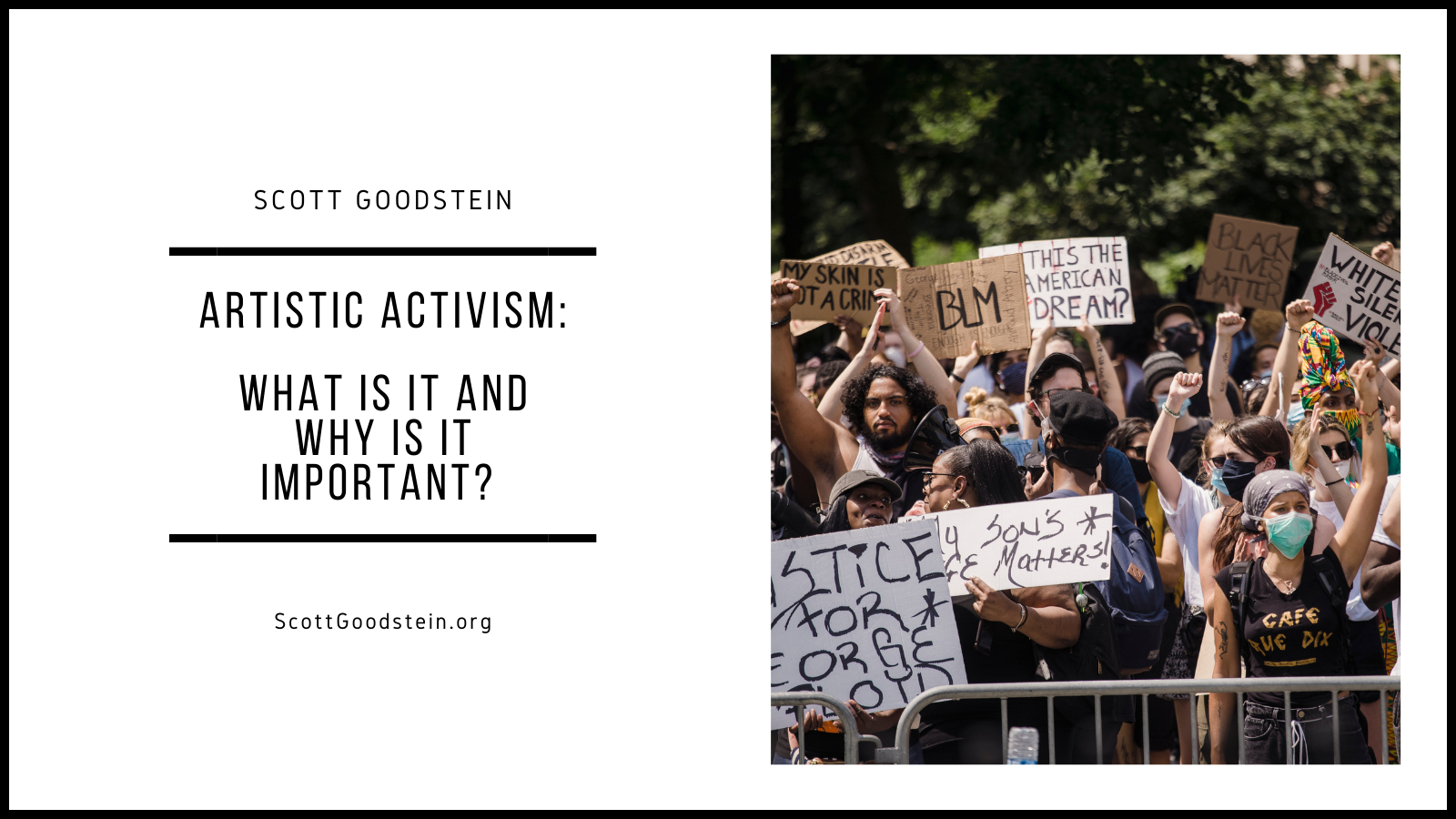“The doubt felt by the artists who preceded us concerned their talent. The doubt felt by artists of today concerns the necessity of their art, and hence their very existence.”
With so much social and political strife in today’s world, it can be hard to think of art as essential. But art may be more necessary now than it has been in decades. Artists of all genres need to re-imagine the power that their craft has in history by engaging society through its brutal honest lens while imagining a different future.
During the Great Depression, artists began commenting on poverty, unaffordable housing, anti-lynching, and worker’s rights. Ever since, artistic activism has been a driving force for change in just about every major social justice movement, both in America and worldwide.
Artistic Expression Energizes & Mobilizes People
Art has the power to move people’s emotions in a way nothing else can. This is true for all types of art. From spoken word, interpretive dance, sculpture, music, murals, etc. When creativity and true-expression are used in activism, they can inspire people to feel something bigger than themselves.
Showing raw emotions can encourage people to pay attention to an issue for a moment longer than they had a day before. It can jolt people into reflecting on why the world is a specific way. It can even force people to vision a different future. In other words, timely, artistic expression can lead to more people discussing ideas and motivating people to joining movements.
Artistic expression does not replace other tactics of activism.It is simply the kerosene that fuels action. Without energy, it is hard to sustain movement building protests, strikes, marches, calling elected officials, or even voting. These actions all take different levels of energy, different motivators, and an enormous amount of creativity to consistently build and grow. Humans need nourishment, energy, and reminders why they are volunteering their precious time to any cause.
Another way to think of this dynamic is that activism aims to change power relations, while art seeks to change an individual’s body, mind, and soul. Though they may seem like two different things, the two must work together to create long-term, meaningful impact, grow and strengthen movements.
Art Activism is Perfect for Today’s Digital-first Landscape
Ideally, politics would always be based on logic and reason, where people discuss and debate issues and come to well-thought solutions. But humans are not rational creatures, and that isn’t how the politics of today work. Humans are driven by stories and symbols that shape the way they think of the world. We react based on emotions and impulses. Therefore, artistic activism can use narratives and metaphors to its advantage.
Today’s world is connected by social media, which allows us to share things faster and further than ever before. So a meaningful socially-conscience painting, poem, or performance shared on social media can reach millions in a matter of minutes.
Open to Everyone
Remember that not everybody is into politics. But everyone expresses themselves through creativity, even if they don’t consider themselves “artists.”
One may go dancing, play an instrument, or even just create memes on social media. Anyone can have that creative spark inside them, especially on issues that are deeply personal. Young people and marginalized groups don’t have to raise millions of dollars to get their message across.
Art is not a frivolous thing in times of strife and upheaval. Instead, the word and the pen can be turned into one of the most powerful weapons of change.
This article was originally published here.


